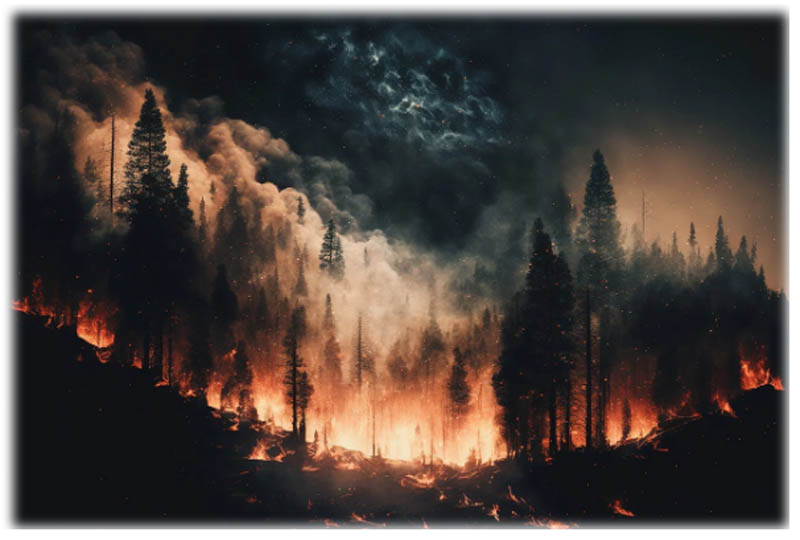
By utilizing a model, researchers projected the movement of the smoke across the region and concluded that it would not pose any health hazards
The thick haze caused by smoke from Canadian wildfires, which initially affected regions in the eastern US and Canada, has now drifted over to Norway and is projected to reach southern Europe
Atmosphere and climate scientists from the Norwegian climate and environmental research institute (NILU) utilized a climate forecast model to predict the trajectory of the smoke from Canadian forest fires. According to their analysis, the smoke is expected to travel through the atmosphere, passing over Norway before continuing southward. The institute assured that the smoke does not pose any health risks in Norway. In a Twitter statement, the institute mentioned that the smoke from the Canadian forest fires is still reaching Norway and will eventually reach other parts of Europe in the coming days.
Since 1 June, the smoke has traversed over Greenland and Iceland, while observations in southern Norway have noted a rise in concentrations of aerosolized particles, as reported by the independent research institution. Nikolaos Evangeliou, a senior researcher at NILU, stated that there might be a possibility of observing haze or detecting the smell of smoke in Norway, but the number of particles in the air is not expected to reach levels that would be harmful to health. As the smoke progresses towards Europe, the particle count diminishes significantly.
Evangeliou further mentioned that the smoke is likely to continue moving through Norway as the Canadian wildfires persist. Kjetil Torseth, the research director at NILU, emphasized that due to the escalating temperatures caused by the climate crisis, forest fires are expected to become more frequent and severe in magnitude
The Canadian wildfires have resulted in hazardous levels of pollution impacting Canada and the eastern coast of the US, particularly in the province of Quebec. The extensive areas affected by unhealthy air quality have even extended as far as the US Midwest.
Wednesday marked a significant milestone, as it was the worst day in recent US history in terms of air pollution caused by wildfires. On that same day, both New York and Detroit reported the world’s poorest air quality.
As a result of the smoke, more than 110 million Americans have received toxic air warnings, leading to flight delays at major airports, the postponement of Major League Baseball games, and a surge in the use of face masks, reminiscent of the pandemic era
The Canadian government has requested assistance in combating over 400 wildfires across the country.






